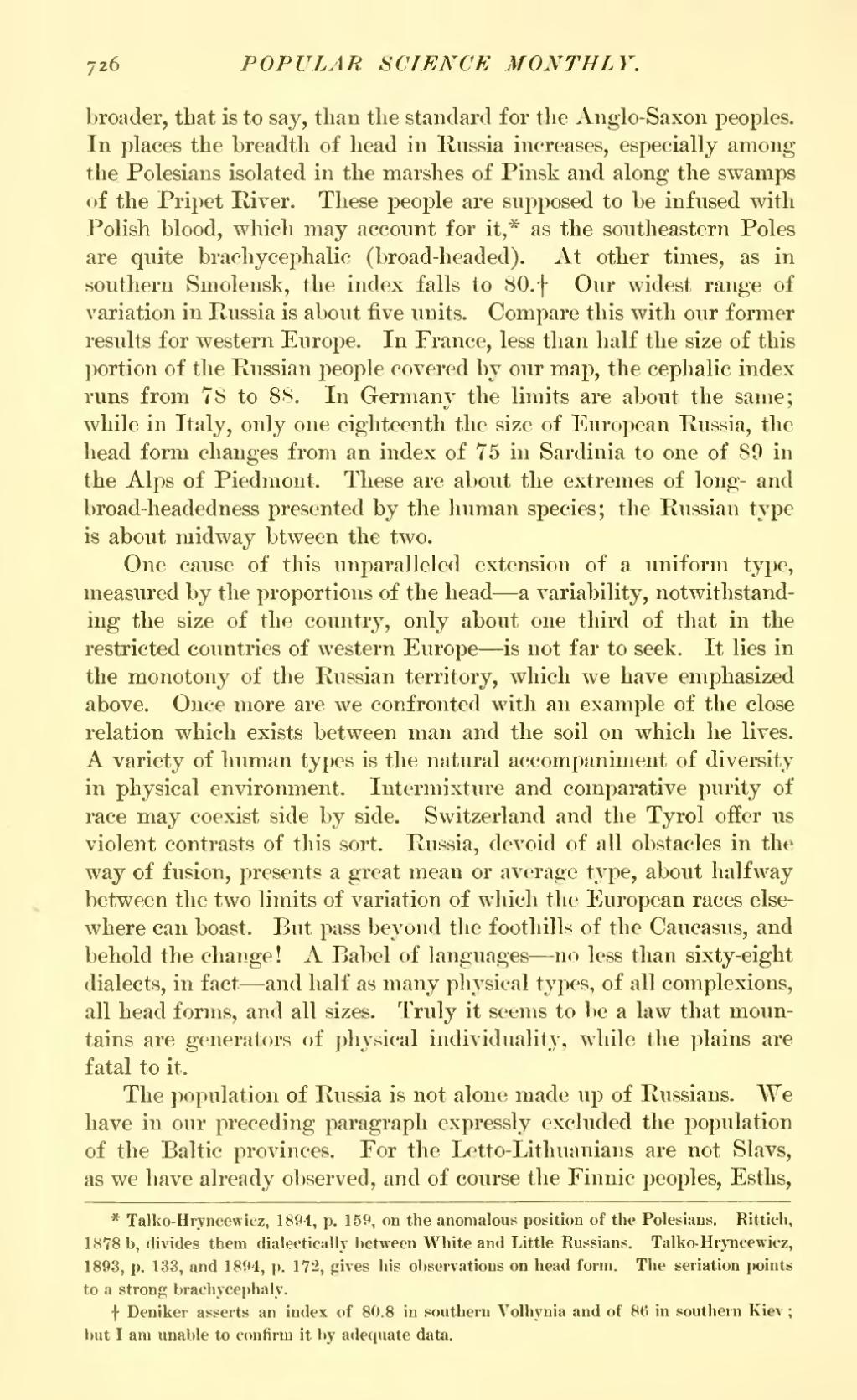broader, that is to say, than the standard for the Anglo-Saxon peoples. In places the breadth of head in Russia increases, especially among the Polesians isolated in the marshes of Pinsk and along the swamps of the Pripet River. These people are supposed to be infused with Polish blood, which may account for it,[1] as the southeastern Poles are quite brachycephalic (broad-headed). At other times, as in southern Smolensk, the index falls to 80.[2] Our widest range of variation in Russia is about five units. Compare this with our former results for western Europe. In France, less than half the size of this portion of the Russian people covered by our map, the cephalic index runs from 78 to 88. In Germany the limits are about the same; while in Italy, only one eighteenth the size of European Russia, the head form changes from an index of 75 in Sardinia to one of 89 in the Alps of Piedmont. These are about the extremes of long-and broad-headedness presented by the human species; the Russian type is about midway between the two.
One cause of this unparalleled extension of a uniform type, measured by the proportions of the head—a variability, notwithstanding the size of the country, only about one third of that in the restricted countries of western Europe—is not far to seek. It lies in the monotony of the Russian territory, which we have emphasized above. Once more are we confronted with an example of the close relation which exists between man and the soil on which he lives. A variety of human types is the natural accompaniment of diversity in physical environment. Intermixture and comparative purity of race may coexist side by side. Switzerland and the Tyrol offer us violent contrasts of this sort. Russia, devoid of all obstacles in the way of fusion, presents a great mean or average type, about halfway between the two limits of variation of which the European races elsewhere can boast. But pass beyond the foothills of the Caucasus, and behold the change! A Babel of languages—no less than sixty-eight dialects, in fact—and half as many physical types, of all complexions, all head forms, and all sizes. Truly it seems to be a law that mountains are generators of physical individuality, while the plains are fatal to it.
The population of Russia is not alone made up of Russians. We have in our preceding paragraph expressly excluded the population of the Baltic provinces. For the Letto-Lithuanians are not Slavs, as we have already observed, and of course the Finnic peoples, Esths,
- ↑ Talko-Hryncewicz, 1894, p. 159, on the anomalous position of the Polesians. Rittich, 1878 b, divides them dialectically between White and Little Russians. Talko-Hryncewicz, 1893, p. 133, and 1894, p. 172, gives his observations on head form. The seriation points to a strong brachycephaly.
- ↑ Deniker asserts an index of 80.8 in southern Volhynia and of 86 in southern Kiev; but I am unable to confirm it by adequate data.

